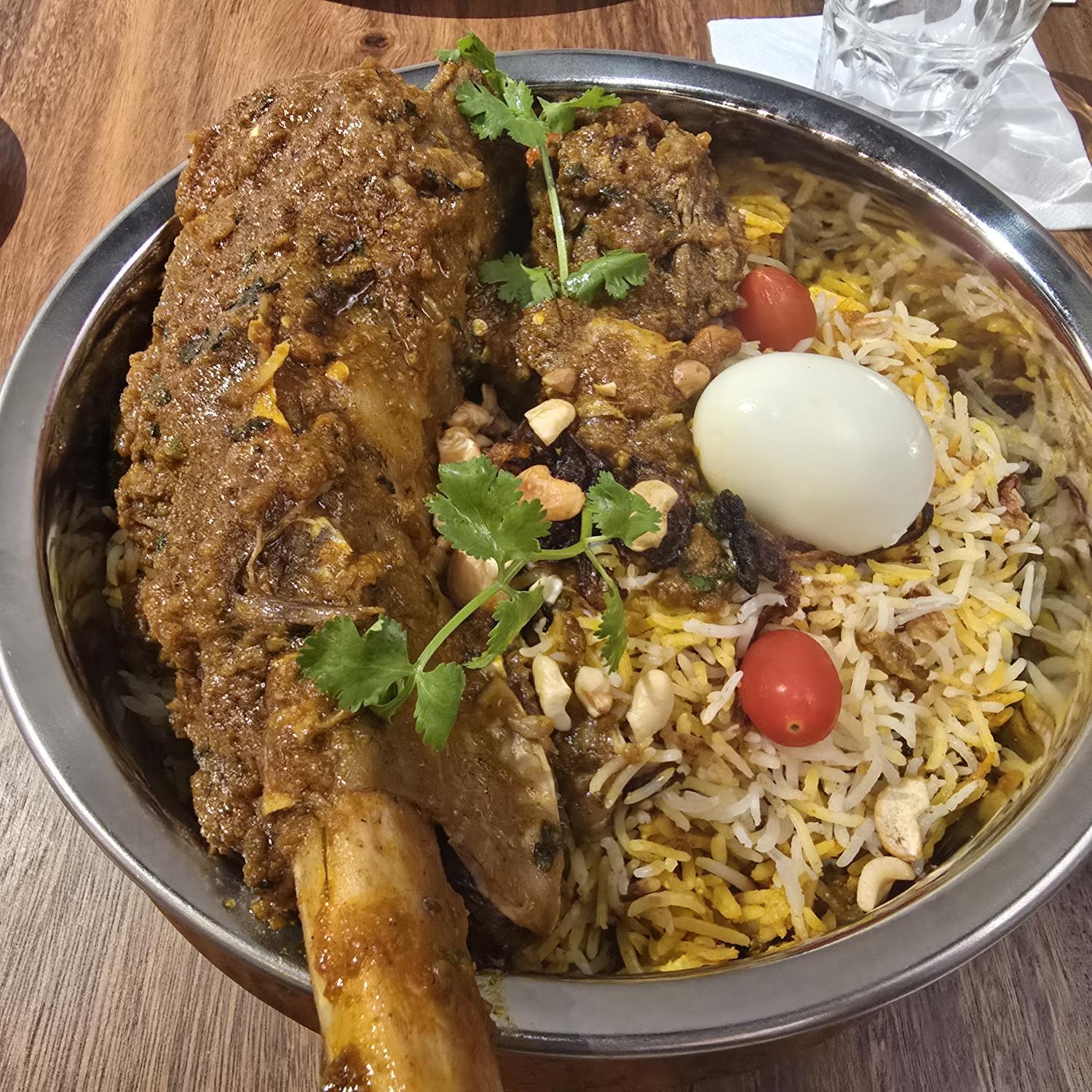The Ultimate Guide to Briyani: A Fragrant Feast Loved Worldwide
18-02-2025

What is Briyani?
Briyani is a flavourful and aromatic rice dish that originated from the Indian subcontinent and has become a beloved meal across Asia, the Middle East, and beyond. Known for its fragrant basmati rice, rich blend of spices, and tender meat or vegetables, briyani brings together bold flavours and cultural heritage.
The History of Briyani
Briyani is believed to have been introduced by Persian traders and Mughal emperors, who brought their love for aromatic rice dishes to India. Over time, regional variations developed, with each community adding its own twist. Today, briyani is enjoyed in countries like Singapore, Malaysia, Indonesia, Pakistan, and even the Middle East.
Different Types of Briyani
1. Hyderabadi Biryani
A famous style from India, Hyderabadi briyani is known for its dum cooking method, where marinated meat and partially cooked rice are layered and slow-cooked in a sealed pot. The result is an intensely flavourful and aromatic dish.
2. Nasi Briyani (Singapore & Malaysia)
Popular in Singapore and Malaysia, Nasi Briyani is made with long-grain basmati rice, ghee, and saffron. It is commonly served with mutton, chicken, or beef, accompanied by dhalcha (lentil curry) and pickled vegetables.
3. Pakistani Biryani
Pakistani-style biryani, particularly Karachi biryani, is spicier and has a stronger tomato base compared to its Indian counterpart. It’s often garnished with fried onions and boiled eggs for added richness.
4. Arabian Mandi Biryani
Mandi is a Middle Eastern variant of biryani that features slow-cooked meat infused with Arabic spices. Unlike traditional biryani, it is usually cooked in an underground oven, giving it a distinct smoky flavour.
5. Kampung Briyani (Indonesian Style)
Indonesian briyani, often called Nasi Kebuli, has a distinctive Southeast Asian touch, using coconut milk and local spices. It is often served with lamb or beef.
Where to Find the Best Briyani in Singapore
If you’re in Singapore and craving a plate of delicious briyani, check out these popular spots:
- Islamic Restaurant – A heritage spot known for its mutton briyani since 1921.
- Allauddin’s Briyani – A favorite at Tekka Centre with fragrant rice and spicy curry.
- Bismillah Briyani – Michelin Bib Gourmand winner, famous for its dum briyani.
- Saffron’s Cafeteria – A hidden gem serving traditional Nasi Briyani with tender meat.
By Briyani Type
✅ Hyderabadi Briyani
- Azizah Hyderabadi Dumm Briyani – Serves authentic Hyderabadi dum briyani with fragrant basmati rice and bold spices.
✅ Nasi Briyani (Singapore & Malaysia Style)
- Cahaya Timur Briyani House – Offers rich, flavourful Nasi Briyani with classic side dishes.
- Dobeh Delights by Zareen’s Kitchen – Serves home-style Nasi Briyani, packed with fragrant spices.
✅ Pakistani Briyani
- Kebabchi Charcoal BBQ – Famous for its spicy, tomato-based Pakistani briyani, garnished with fried onions and boiled eggs.
✅ Arabian Mandi Briyani
- Abu Mubarak Mandi Rice – Specialises in slow-cooked Mandi rice with tender meat.
- Hadramawt Kitchen – Serves authentic Arabic-style Mandi Briyani with a smoky touch.
- Tarboush Restaurant – Offers a variety of Middle Eastern rice dishes, including Mandi Briyani.
✅ Kampung Briyani (Indonesian-Style)
- Nasi Kebuli is hard to find in Singapore. Let's us know if you find one.
Health Benefits of Briyani
While briyani is often considered an indulgent dish, it does have nutritional benefits when prepared with balanced ingredients:
- Protein-rich – Chicken, mutton, or beef provides essential protein for muscle growth.
- Good fats – Ghee contains healthy fats that enhance flavor and provide energy.
- Spices with benefits – Turmeric, cloves, and cinnamon have anti-inflammatory properties.
Briyani or Biryani
The difference between briyani and biryani mainly comes down to spelling and regional usage rather than any major culinary distinction. Here's a breakdown:
1. Spelling and Regional Usage
- Biryani – The spelling "biryani" is the most widely used internationally, especially in India, Pakistan, and Middle Eastern countries.
- Briyani – The term "briyani" is more commonly used in Singapore and Malaysia, where the dish has been adapted to local tastes.
2. Cooking Style and Flavour Differences
While the core ingredients and cooking methods remain similar, there can be slight variations:
- Indian/Pakistani Biryani: Usually follows the dum (slow cooking) method, layering basmati rice with marinated meat, spices, and saffron-infused milk. Variants include Hyderabadi, Kolkata, and Sindhi biryanis.
- Singapore/Malaysian Briyani: Often called Nasi Briyani, it has a local touch with more use of ghee, curry-based gravies, and sometimes coconut milk. It is commonly served with achar (pickled vegetables) and dhalcha (lentil curry).
3. Meat Choices and Side Dishes
- Biryani in South Asia is typically made with chicken, mutton, beef, or fish, and is served with raita (yogurt sauce) or boiled eggs.
- Briyani in Singapore and Malaysia often includes beef rendang, ayam masak merah (spicy tomato chicken), or fried chicken, paired with dhalcha.
Conclusion
Briyani is more than just a meal; it’s a celebration of flavours, tradition, and culinary craftsmanship. Whether you prefer the fiery Karachi briyani, the aromatic Hyderabadi dum briyani, or the local Nasi Briyani, there’s a version for every palate. Try making it at home or explore some of the best briyani spots in Singapore to enjoy this timeless dish.
Want to find the best halal briyani in Singapore? Check out our community recommendations on Briyani at Halal Tag and let us know your favourite spots!
Link to Topic Gallery